Vvim - Keyboardless Vim interactions
This is done via a hardware glove that the user wears. The glove detects the finger's positions and translates them into key presses. It's currently a work in progress.
Vvim - Keyboardless Vim interactions
This is done via a hardware glove that the user wears. The glove detects the
finger's positions and translates them into key presses. It's currently a work
in progress.
The glove prototype, with 4 sensors on two fingers

Subset of data
The stream of data from the 4 sensors (here each shown in a different colour)
has been zeroed so that they all centre around the time when the user pressed
the 'y' key.
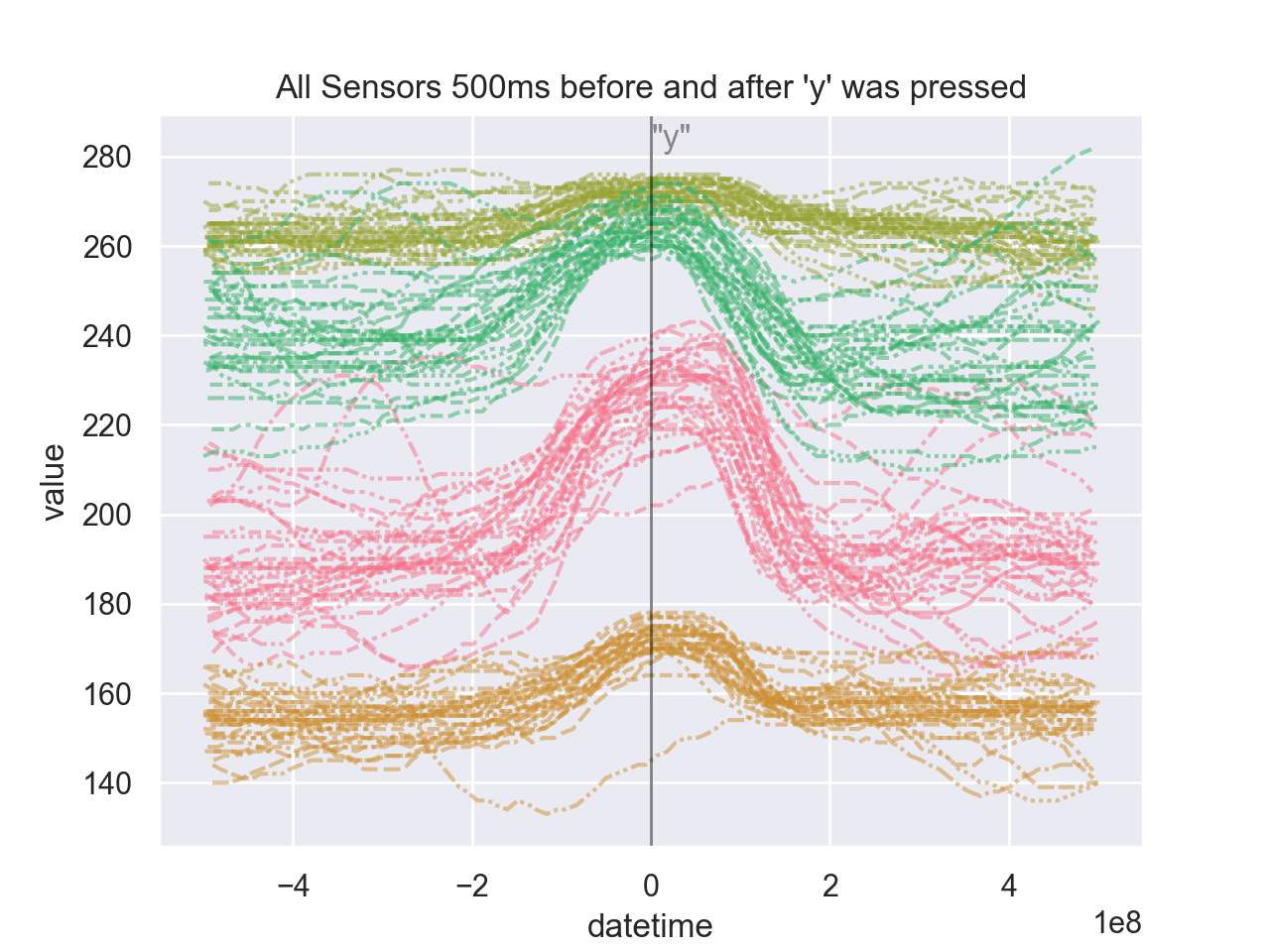
Current Features
-
Glove prototype has been constructed.
-
Glove can detect finger movements of the right fore finger and right middle
finger (With space to expand to more fingers if these first two actually
work)- This corresponds to the following keys, shown with how often those keys
show up in the current dataset:h: 628,u: 291,y: 171,m: 171,
b: 155,k: 120,j: 21,
- This corresponds to the following keys, shown with how often those keys
-
Glove records finger movements via an Arduino script
vvim.inoon an Uno,
and sends them to serial output. -
Serial output is read by the python script
glove_logger.pyand saved to the
fileglove.logalong with the Unix milliseconds since epoch. -
A keylogger is installed on the developer's machine, and logs key presses to
the filekeys.logalong with Unix milliseconds since epoch. -
Running
cleanup.shcleans up the data from the keylogger and the serial
output into one file namedsorted.log. -
A Gradient Boosted tree has been trained and saved to
model.pkl. Currently
it has a test accuracy of 79.7%.- This will hopefully be improved as more data is gathered, as currently
there are only 587 keypresses on which to train 9 categories, or about
65 examples per category which is not enough.
- This will hopefully be improved as more data is gathered, as currently
-
The file
eda.pysaves plots toplots/such as:
Graphs
Each colour is a differently positioned sensor. Each line is one stream of data
recorded by a sensor. The streams have each been zeroed so that every instance
of pressing a certain key is centred.
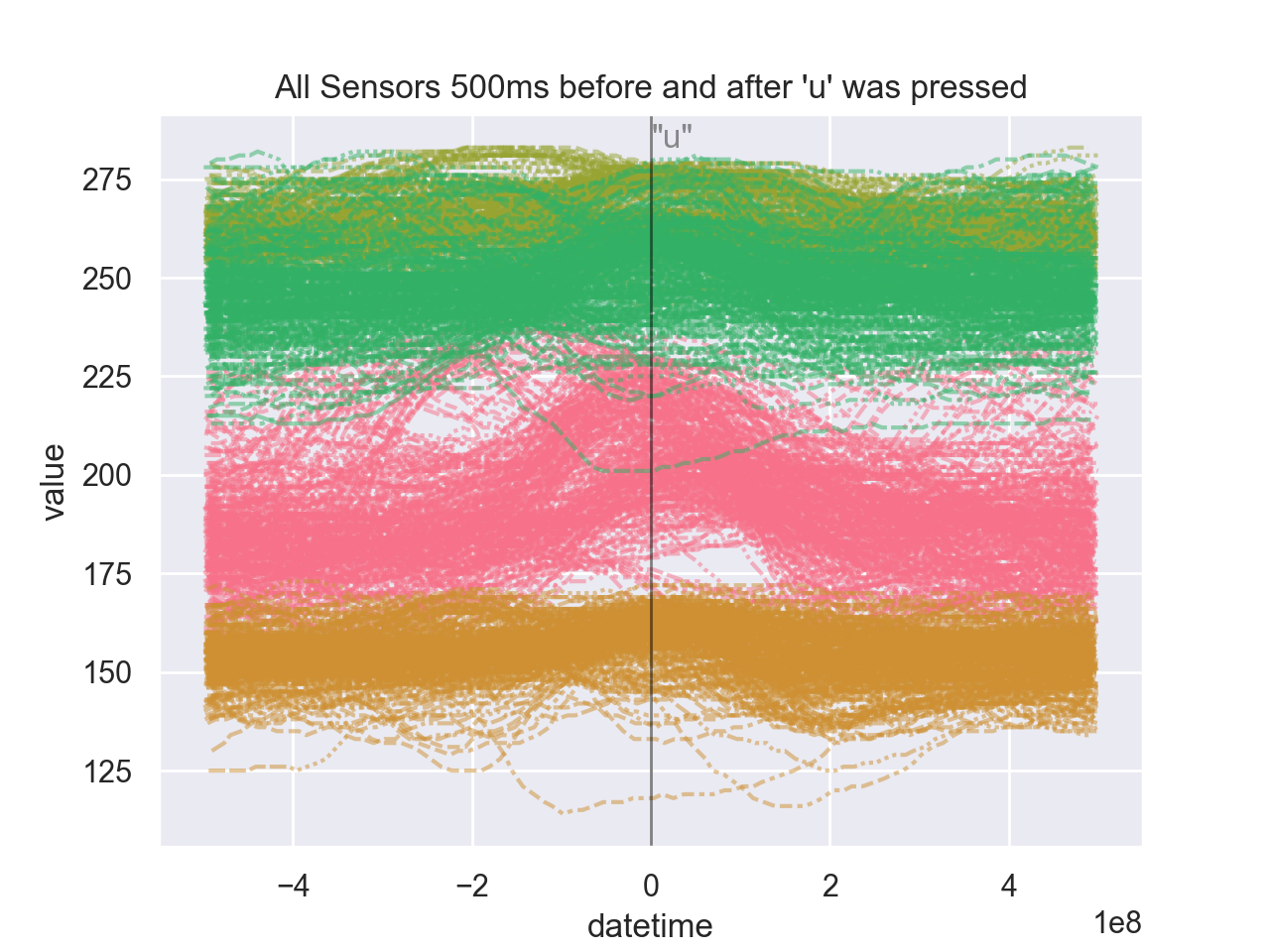
Keys on the home row
Some keys are easier to spot, and others less so as my fingers move a lot when
pressing a y compared to a k just because of where the keys are positioned
on the keyboard.
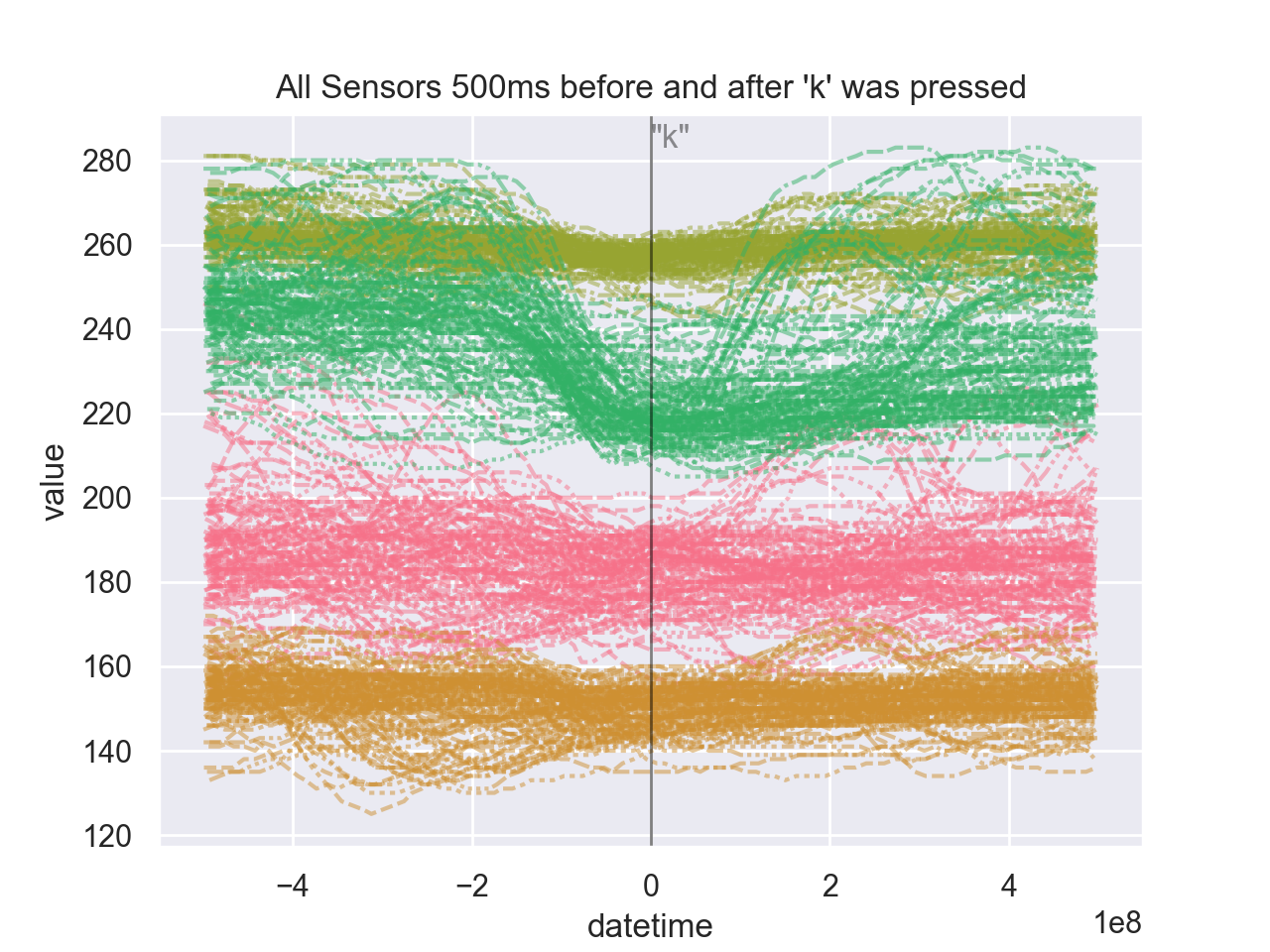
More or less data
The data has not been normalised, so there's far more data for when common keys
like h are pressed compared to when a j is pressed
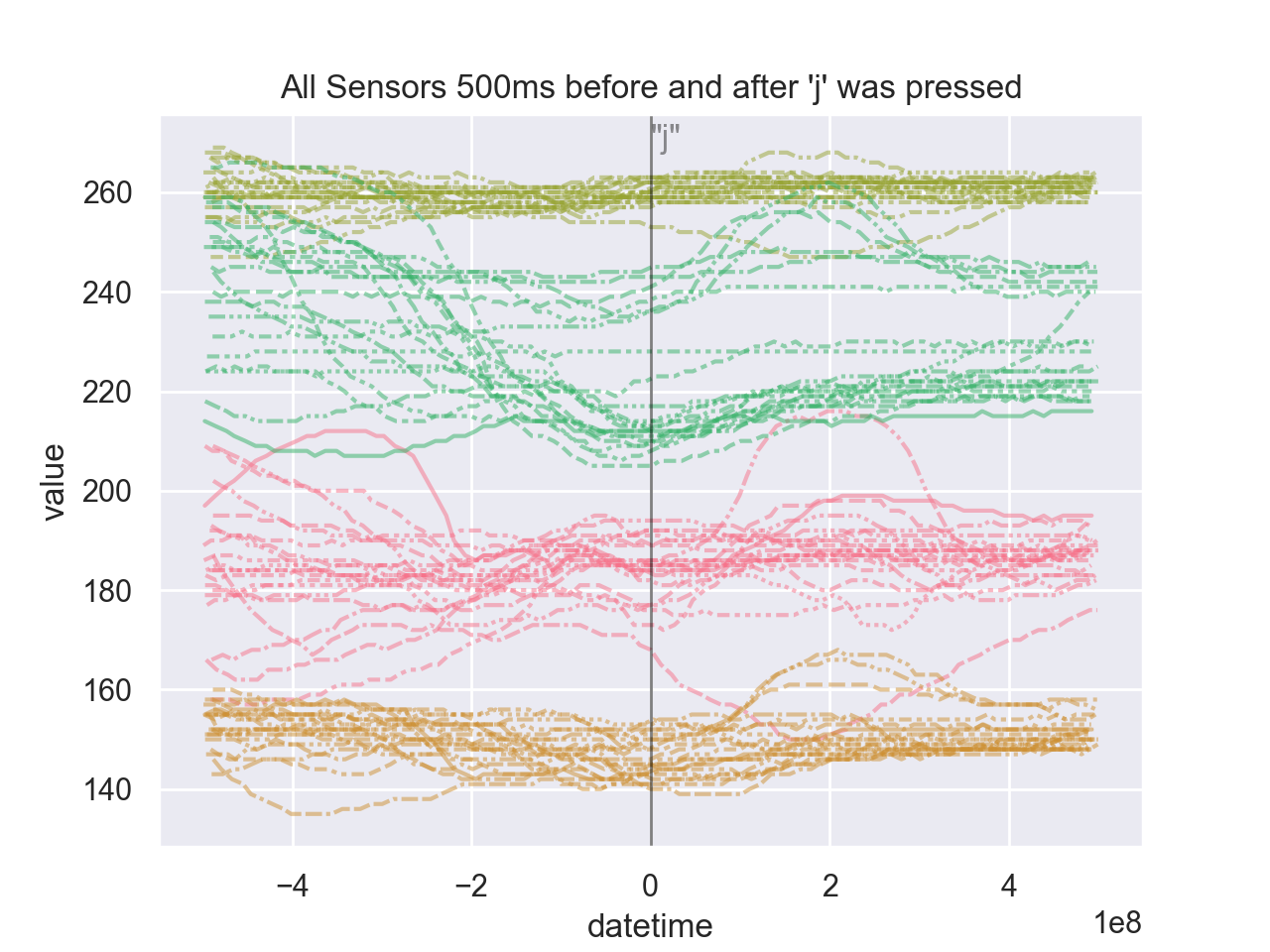
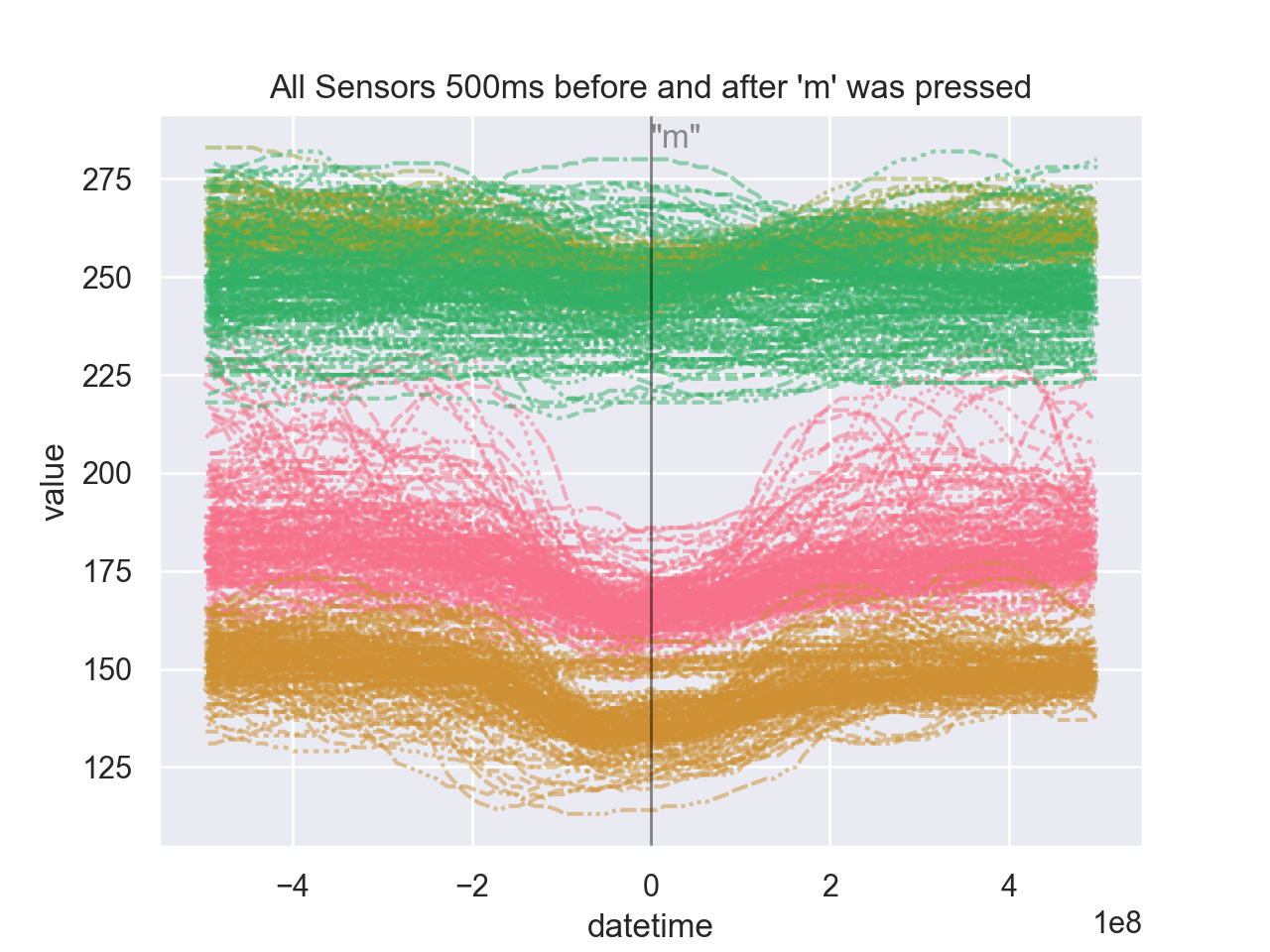
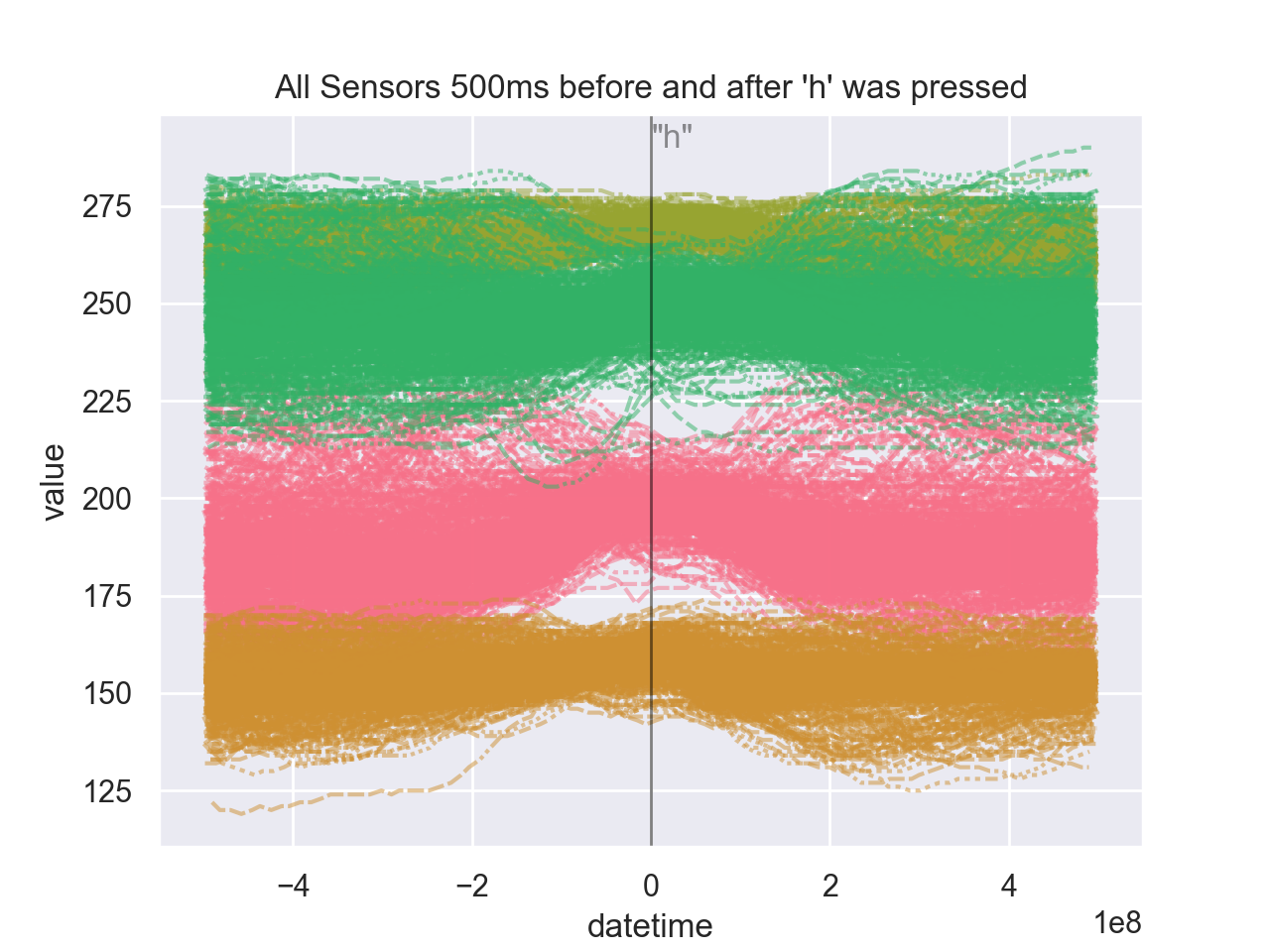
In Progress
- Currently there are only about 600 keypresses recorded. Record more examples
of typing and add more sensors to the fingers so that fewer keystrokes have
to be typed in order to get the data.
To Do
- If flex sensors aren't enough to predict exactly when a key is pressed, add
force sensors to the fingertips. - Use an Arduino Nano instead of an Uno, and host the entire thing on the
user's hand - Connect the glove to the computer via Bluetooth, instead of a wired
connection - Current models don't have the option of categorizing an sequence of sensor
readings as not pressing any key at all. This should be fixed so the model
isn't constantly assuming at least one key is being pressed- This could be done easily with pressure sensors
- Write some sort of visualiser to live track sensor data, actual key presses,
and predicted key presses
Keys and which finger tends to press them
Note that this list is likely very specific to the author, as different people
will type differently. I think I probably use my right ring finger much more
than I really should. Also I type a y with my index finger for words like
type or you (where I subsequently have to type another letter with me right
hand), but I type it with my middle finger for words like yes, yank, or
keyboard.
- Right Hand
- Thumb:
space - Index:
j,m,n,b,h,y - Middle:
k,y,u,i,<,(,[ - Ring:
l,:,BACKSPACE,o,p,>,),],0,_,-,+,=,,,. - Pinky:
;,ENTER,/,?
- Thumb:
- Left Hand (Incomplete as I've not yet built a glove for the left hand)
- Pinky:
- Ring:
- Middle:
- Index:
- Thumb:
Here's a picture of my keyboard for reference:

How to Start Recording Data
Probably best to do this all in tmux since handling multiple terminal windows
is a pain otherwise. A keylogger (I use Casey Scarborough's
keylogger) is also required.
- Install requirements
pip3 install -r requirements.txt
- Run the command to clear the logfile:
sudo keylogger clear
- Start the keylogger:
sudo keylogger ./keys.log
- Start recording glove movements:
python3 glove_logger.py
-
Put the glove on, and start typing things out. I usually do this by opening
a text file (like Alice in Wonderland available on Gutenberg) in vim (vim alice.txt), and then splitting the window vertically (:vsp), and then
opening a temporary file in which to type in (:e tmp). Finally, type
(:set cursorbind) into both frames so that the source text scrolls as you
type it. They keystrokes and finger movements will be recorded separately -
Remove the glove
-
Stop the keylogger with
CTRL-C -
Stop recording the finger movements with
CTRL-C -
Now the data is recorded, clean it up:
./cleanup.sh
- And analyse the data with
eda.py
python3 eda.py
The images will be stored to plots/ for your viewing pleasure



